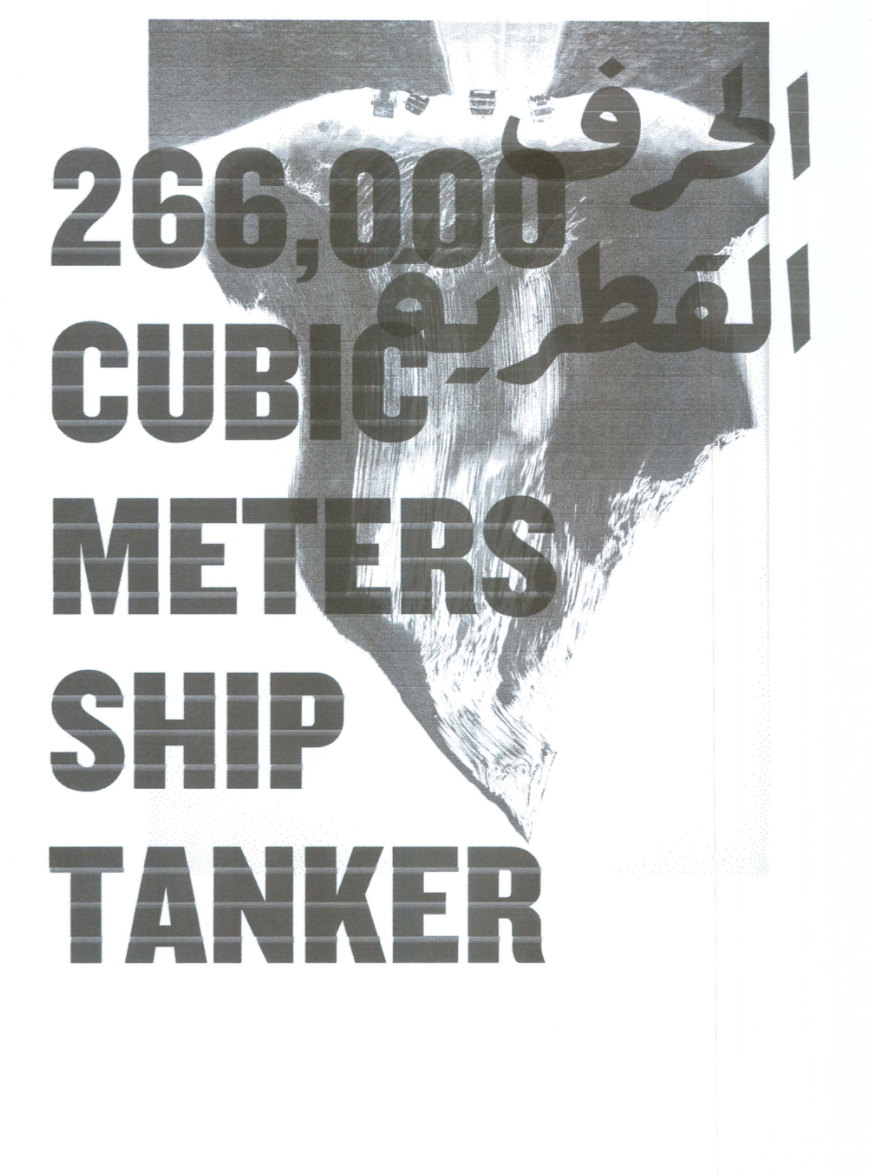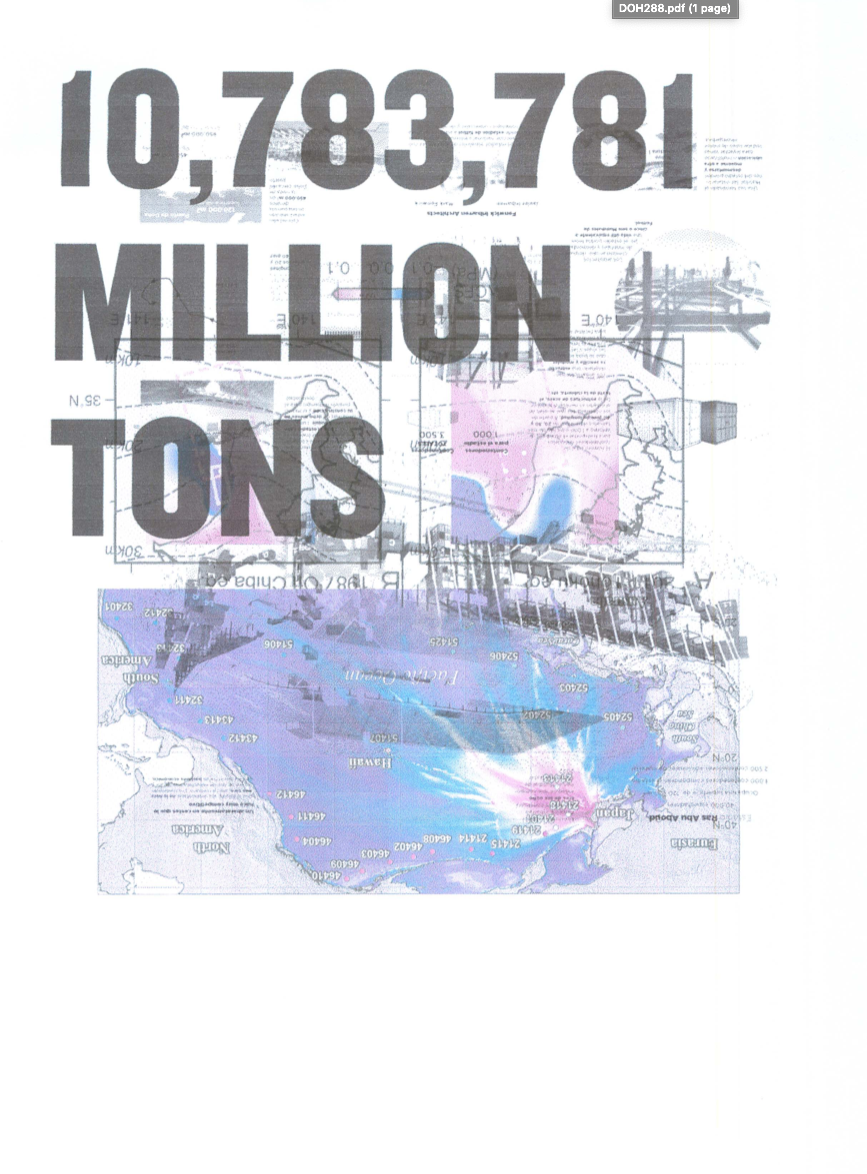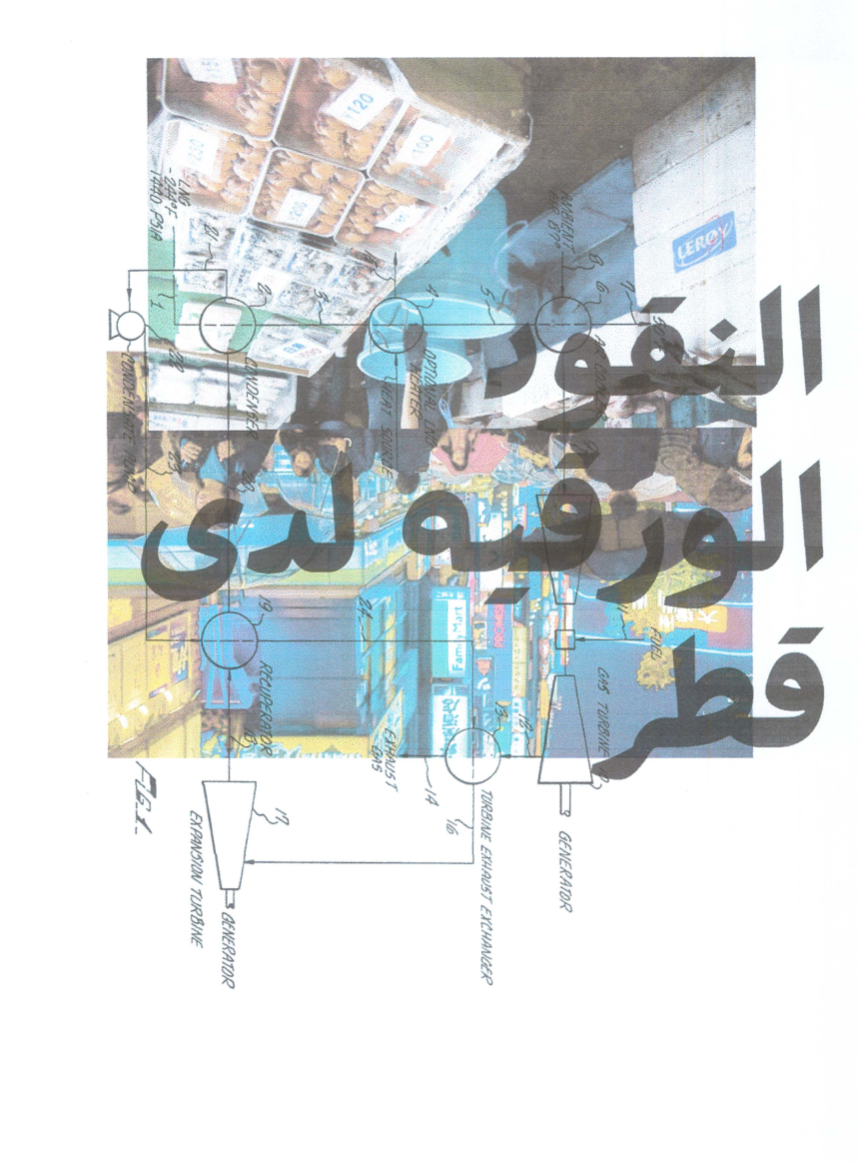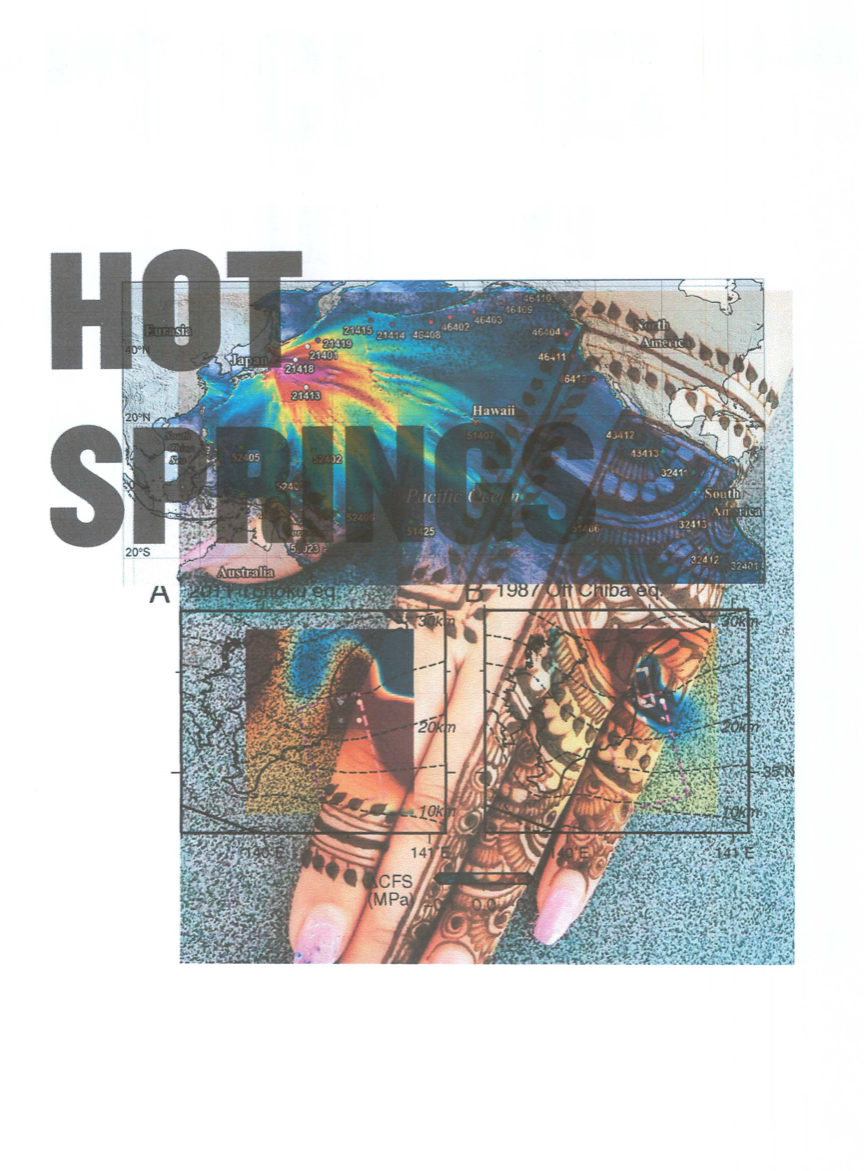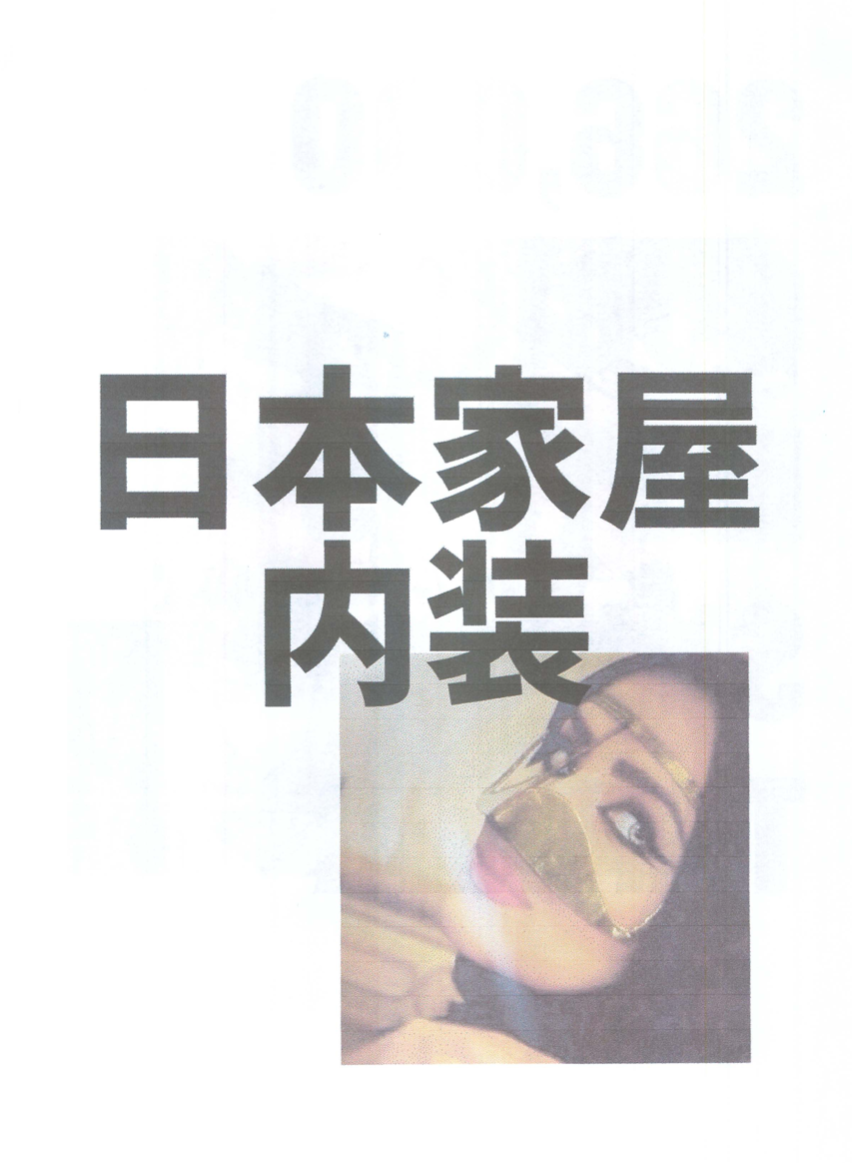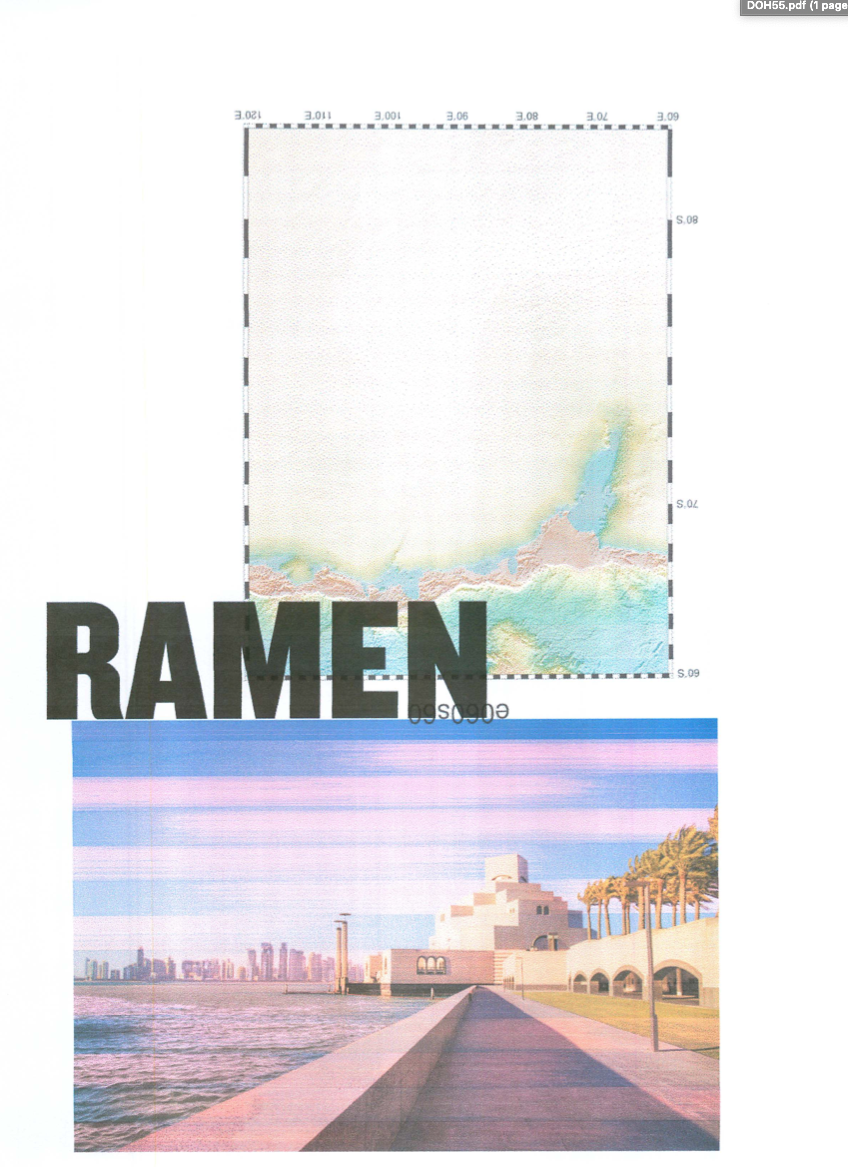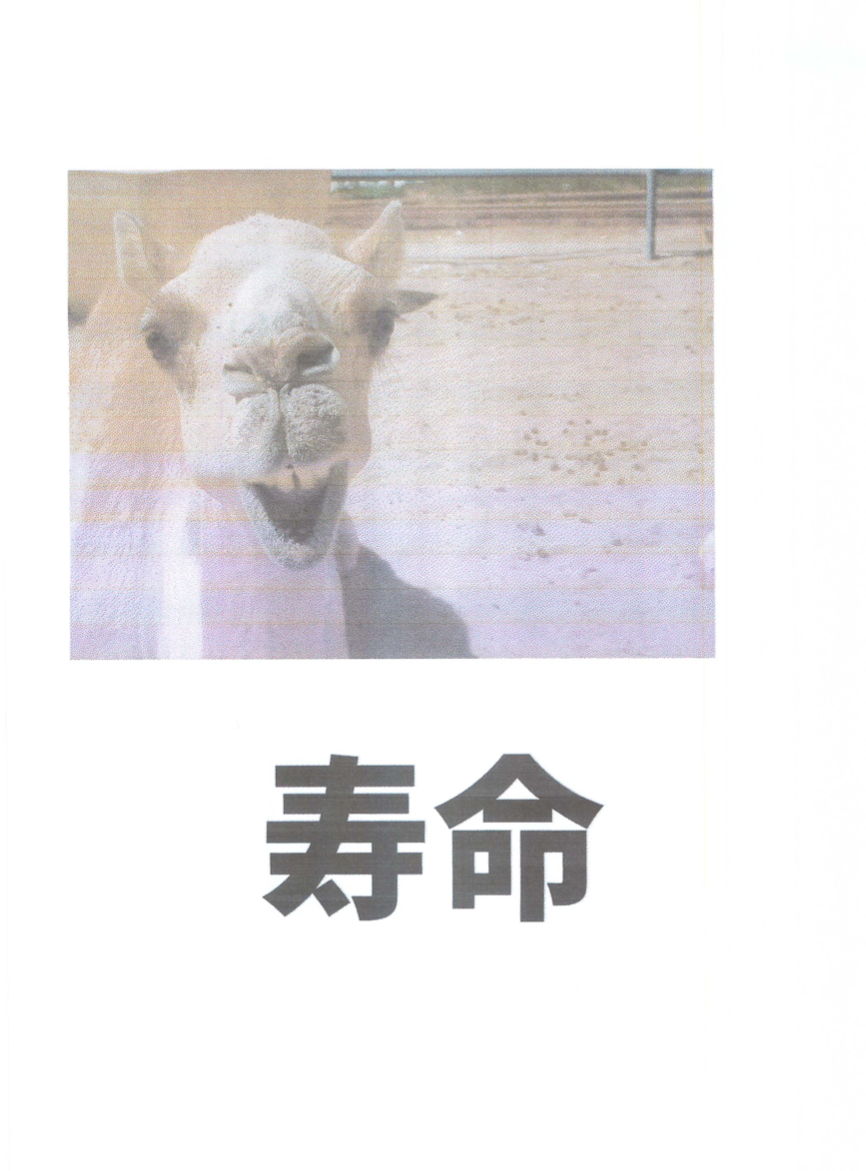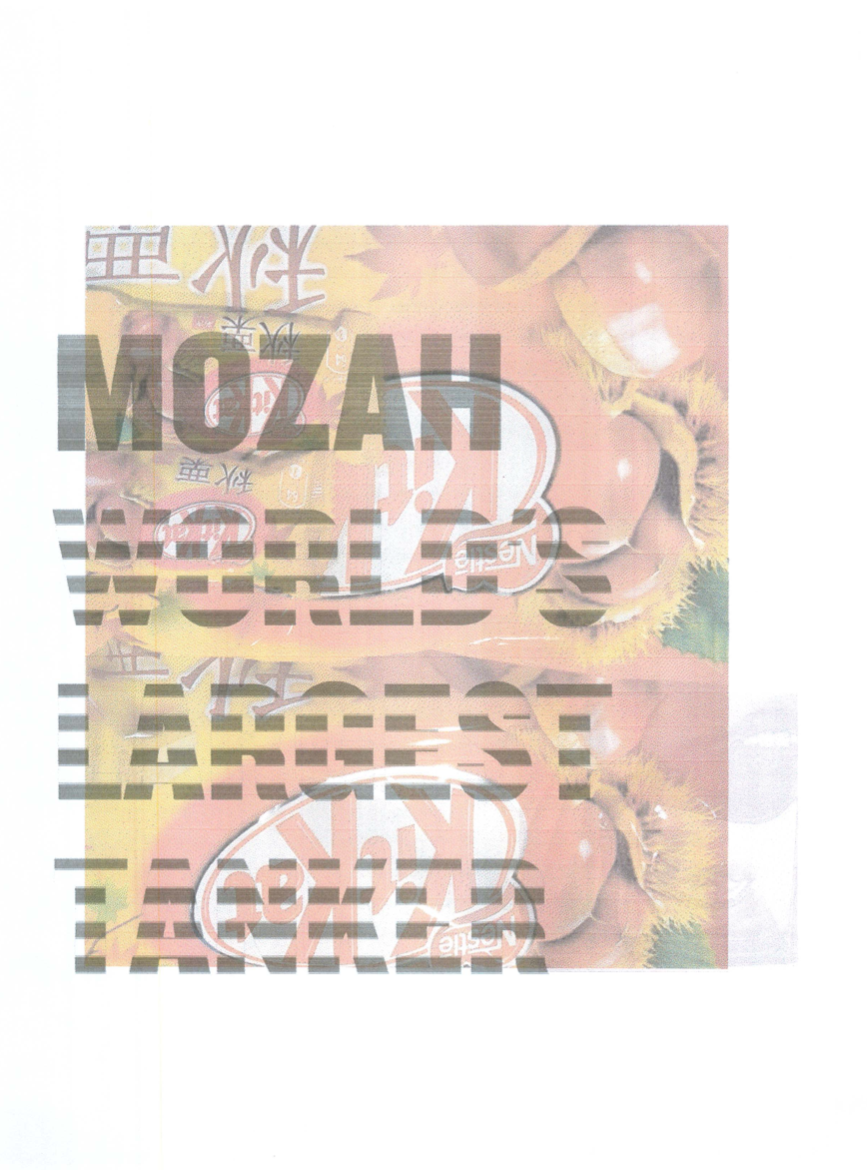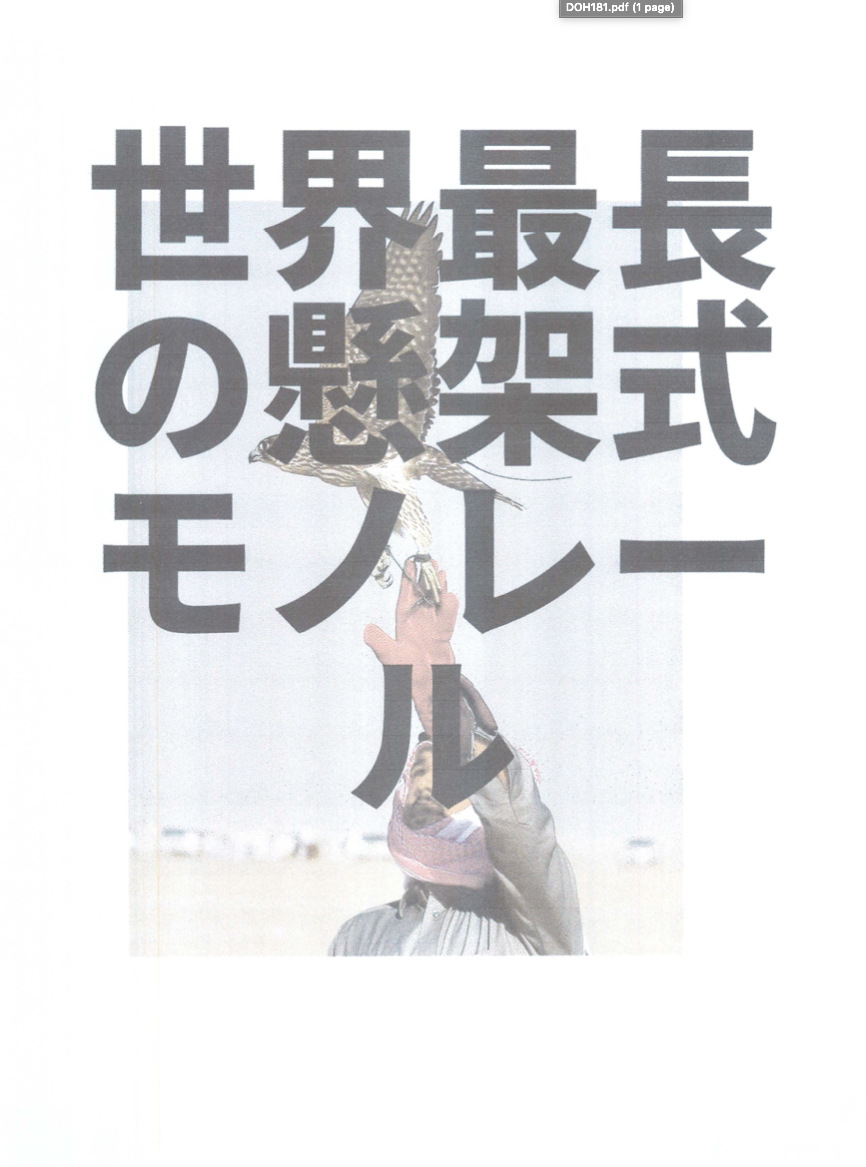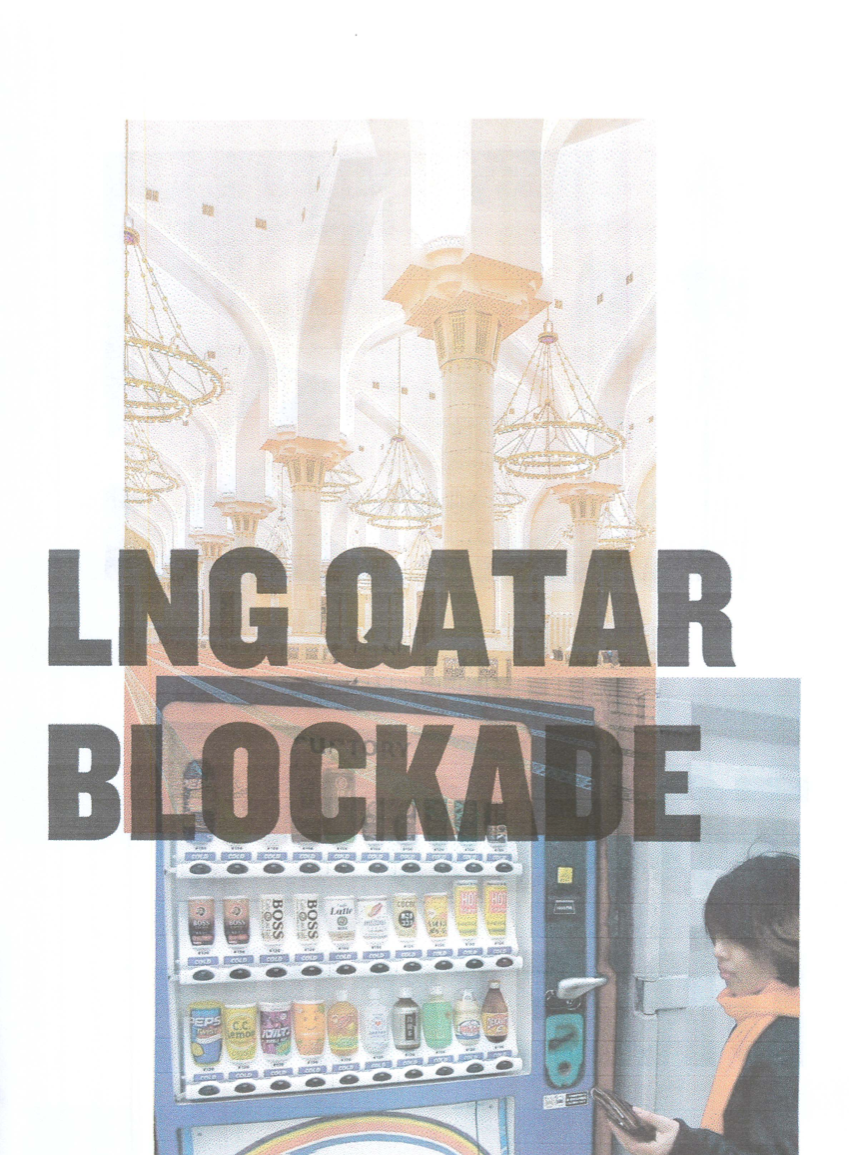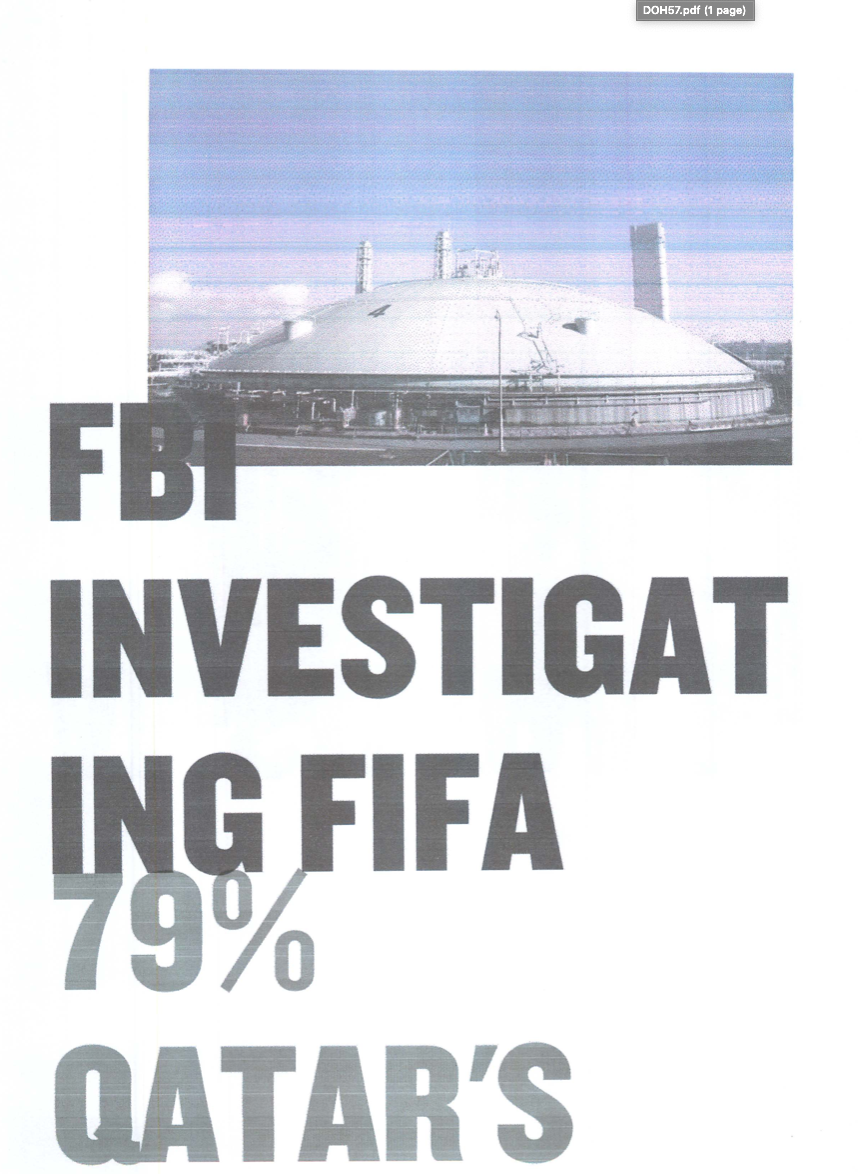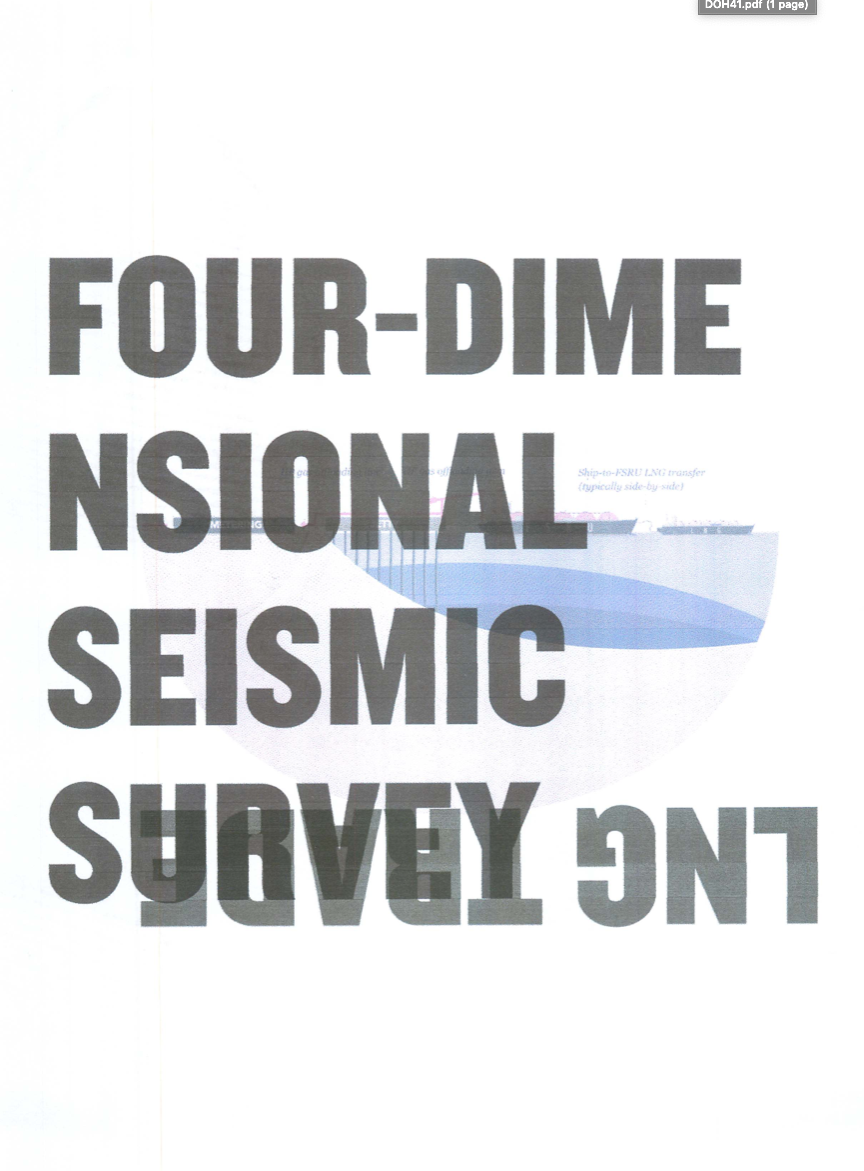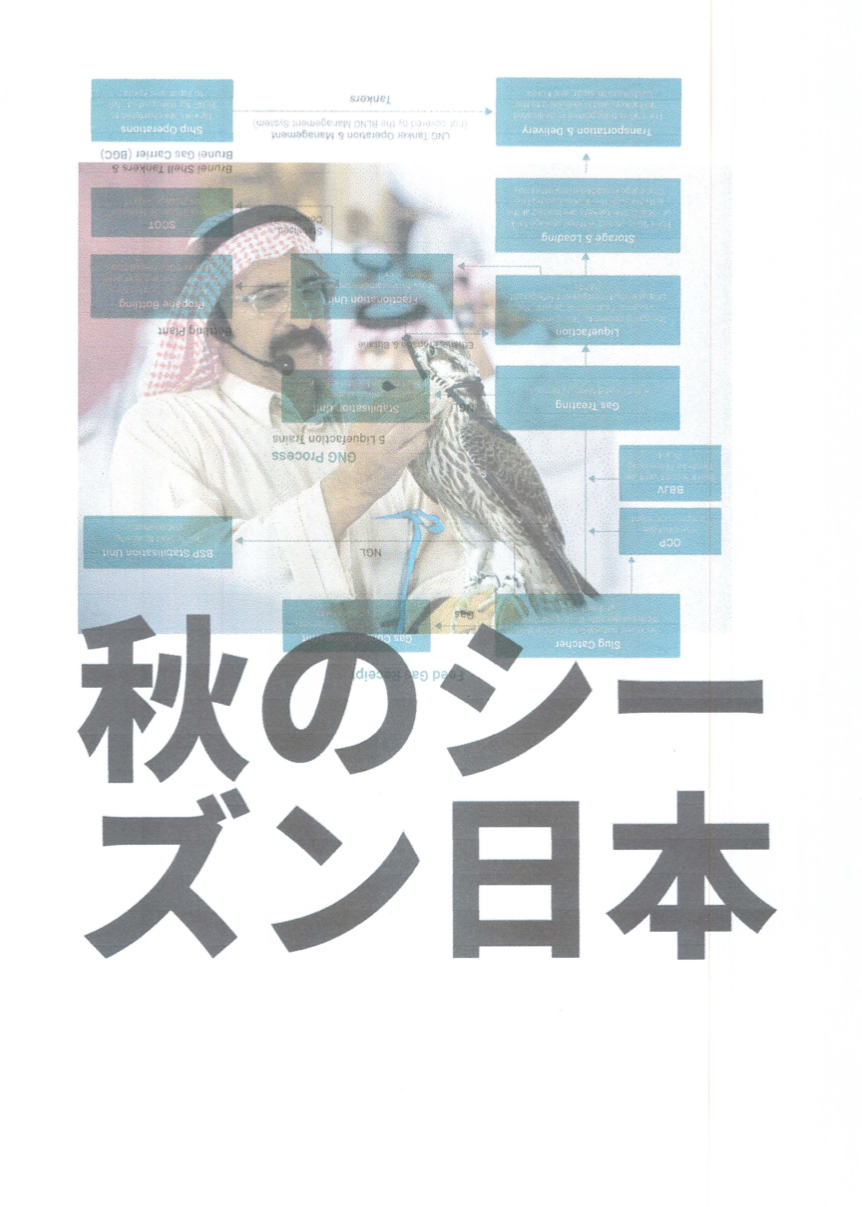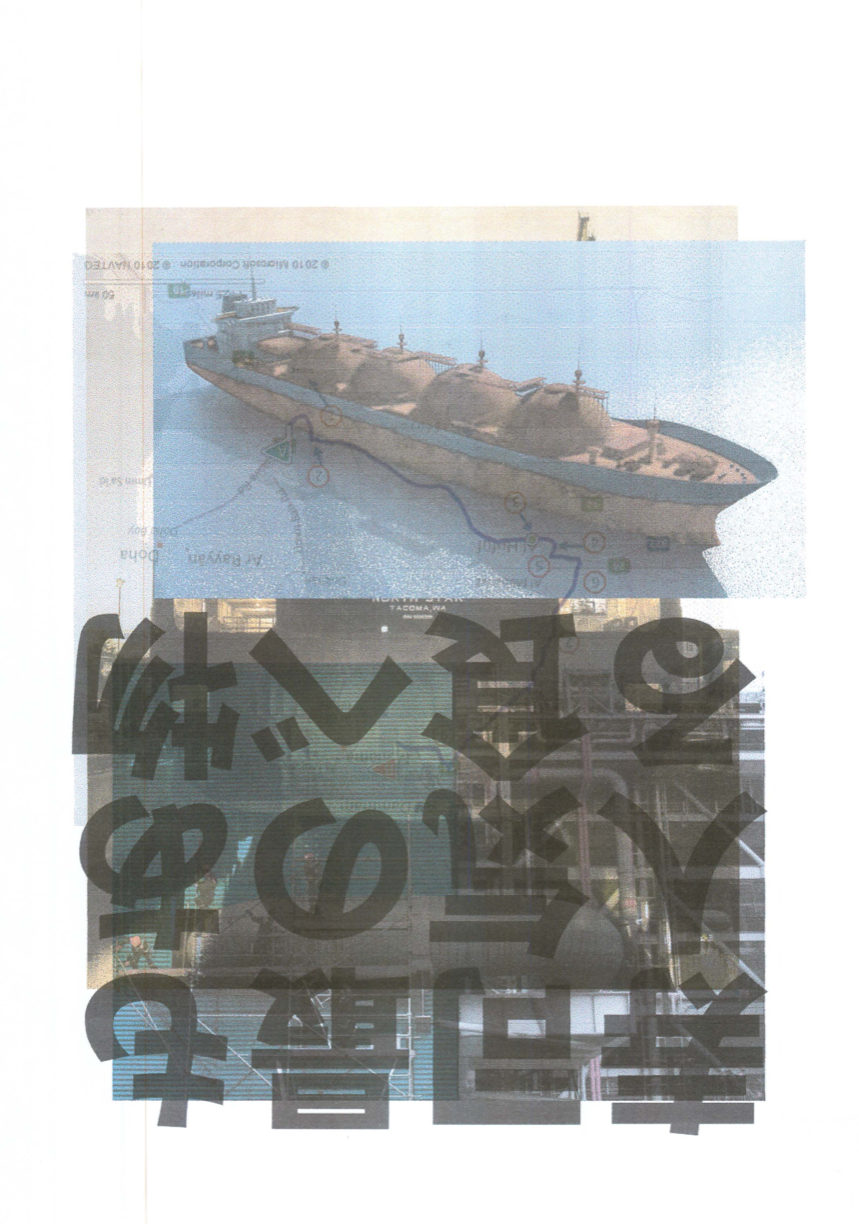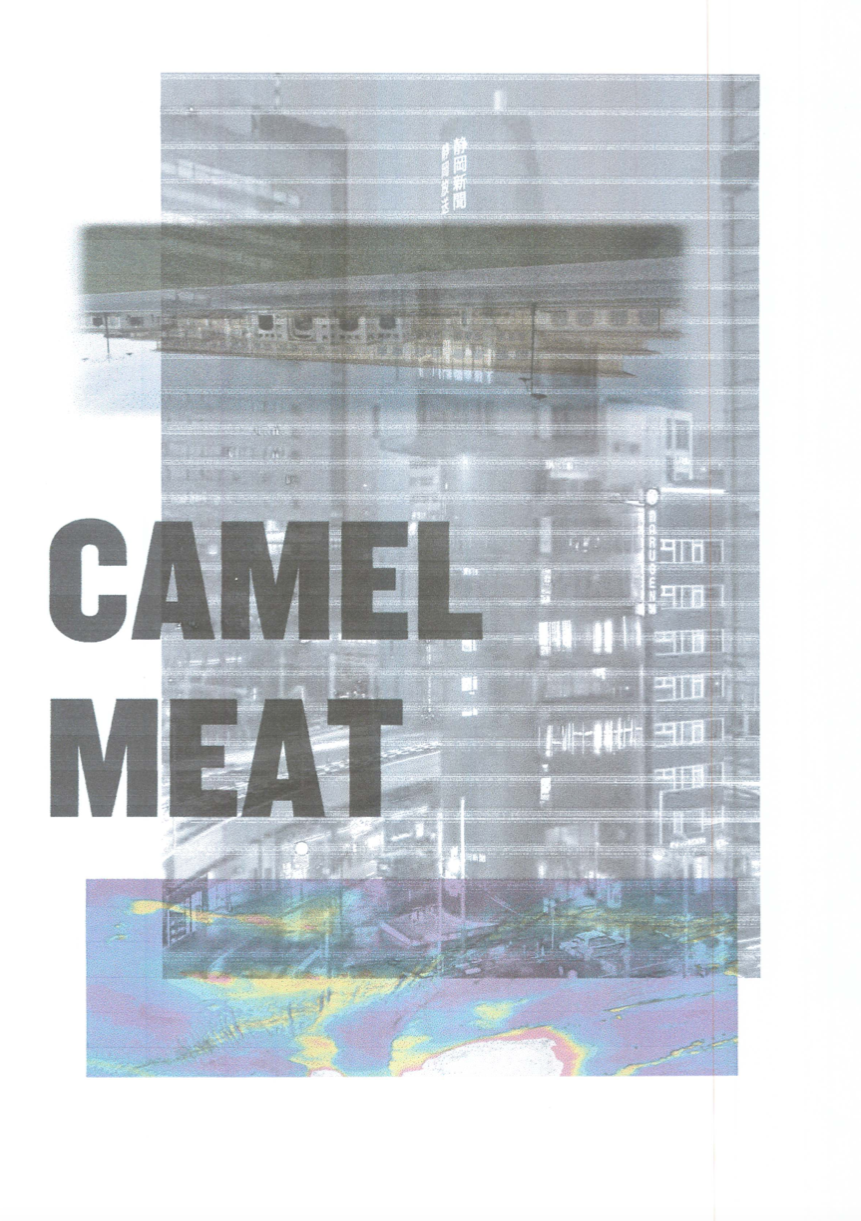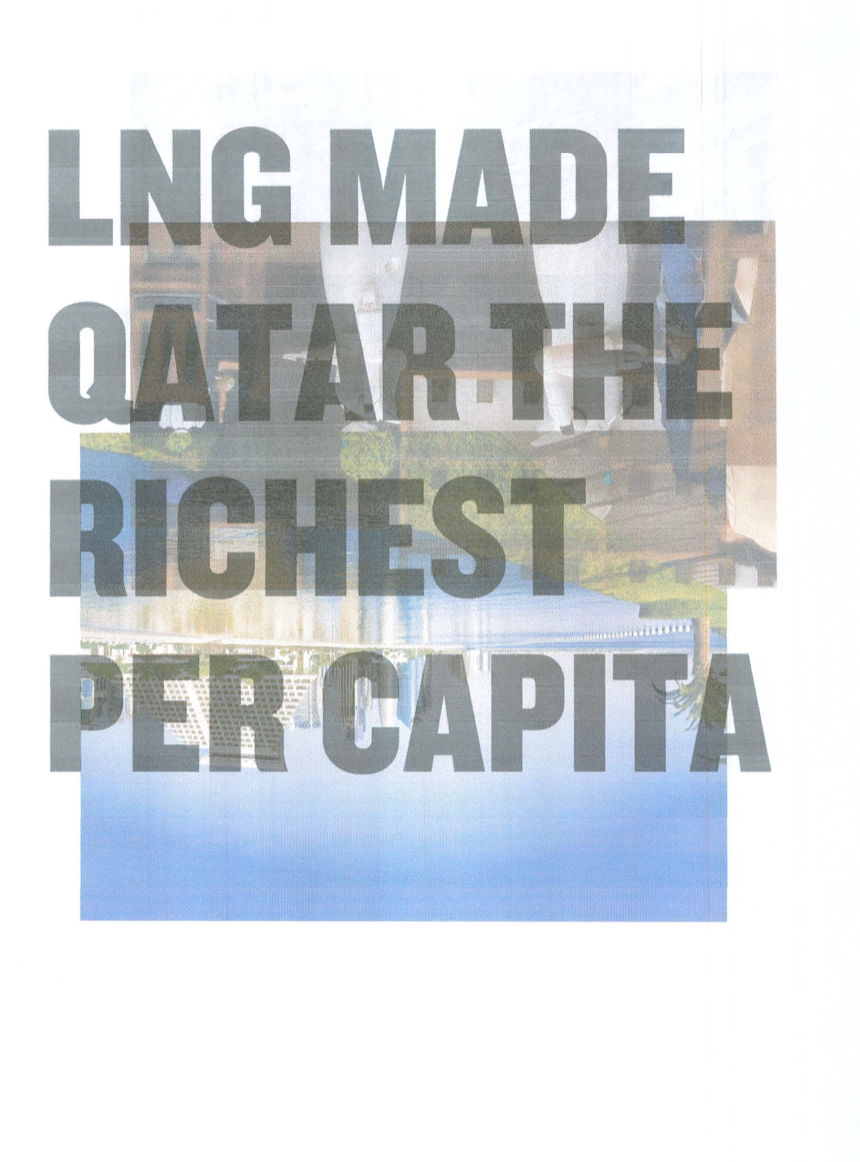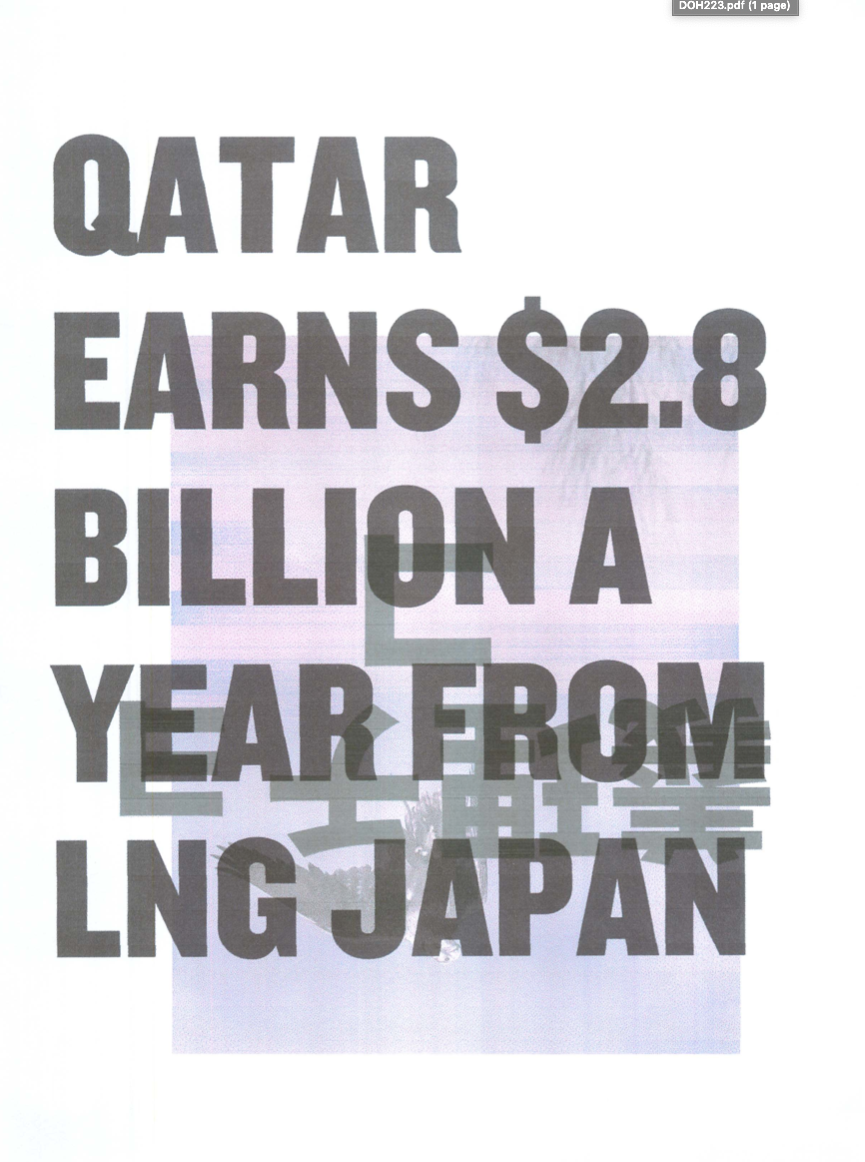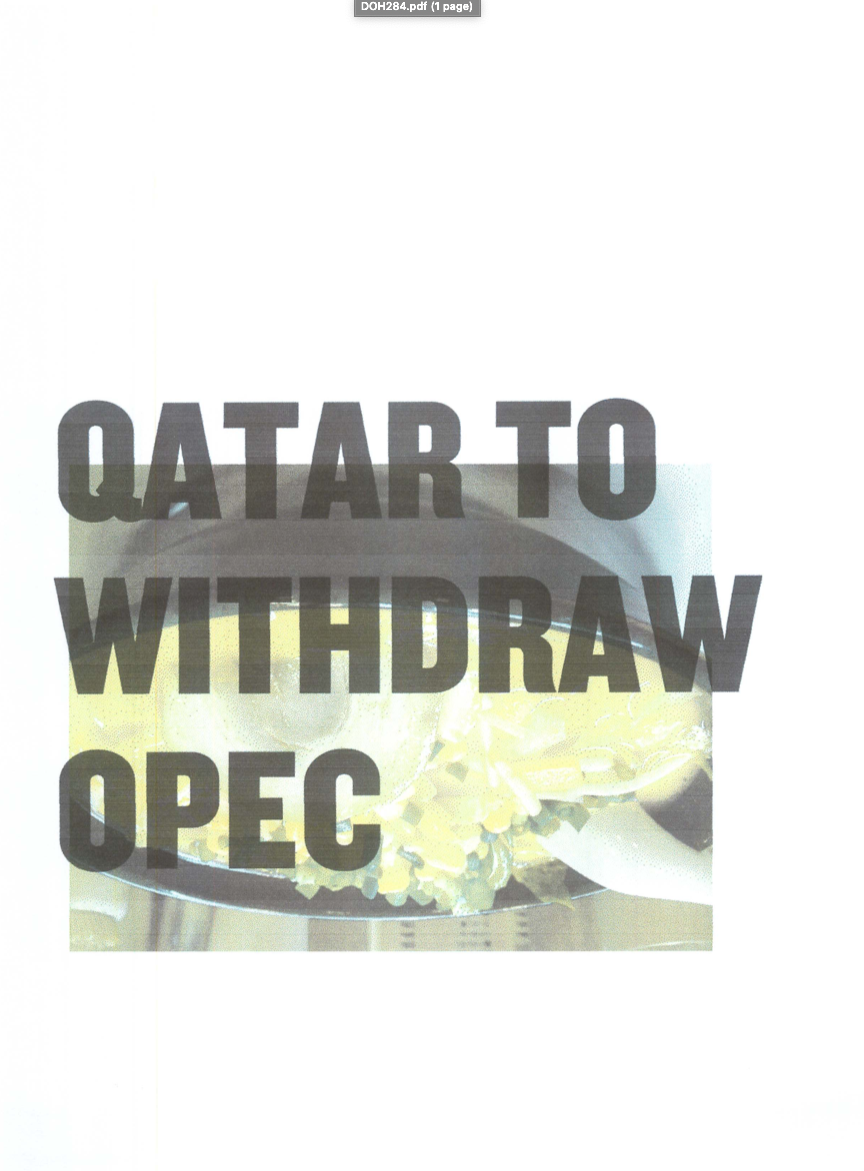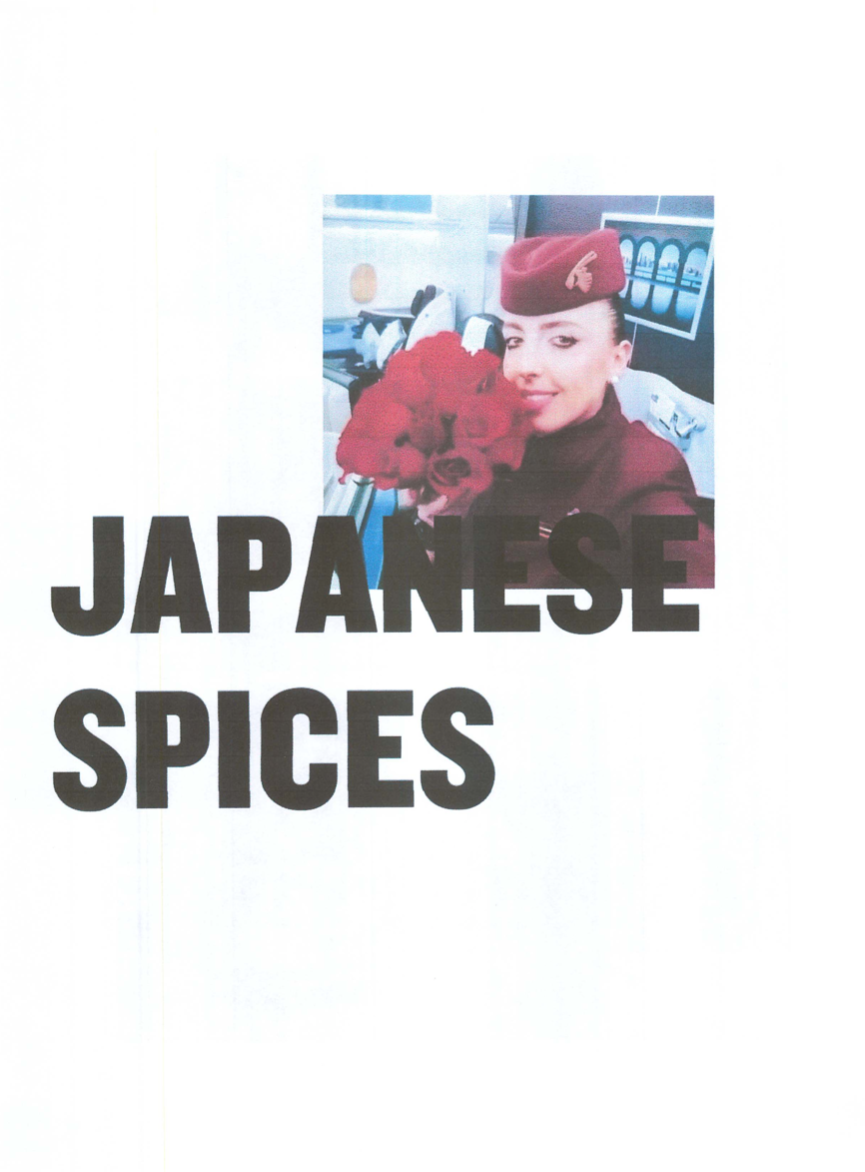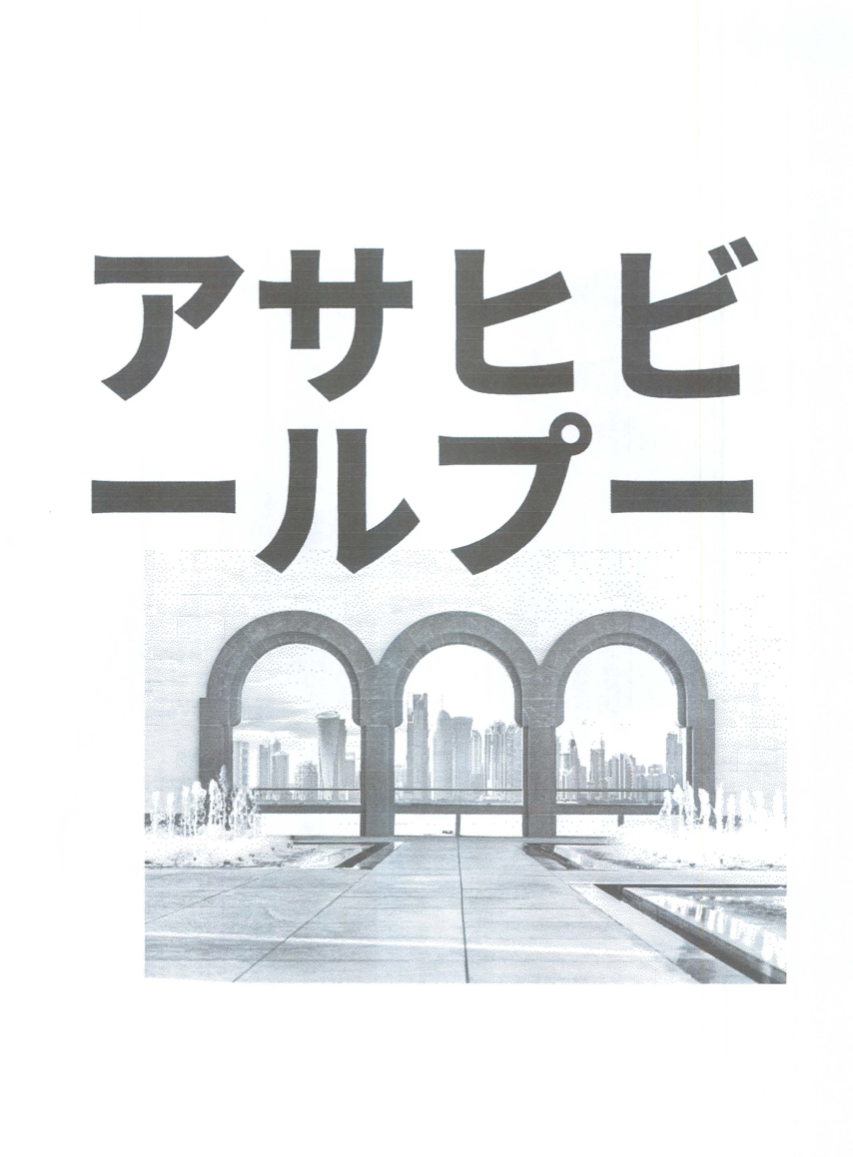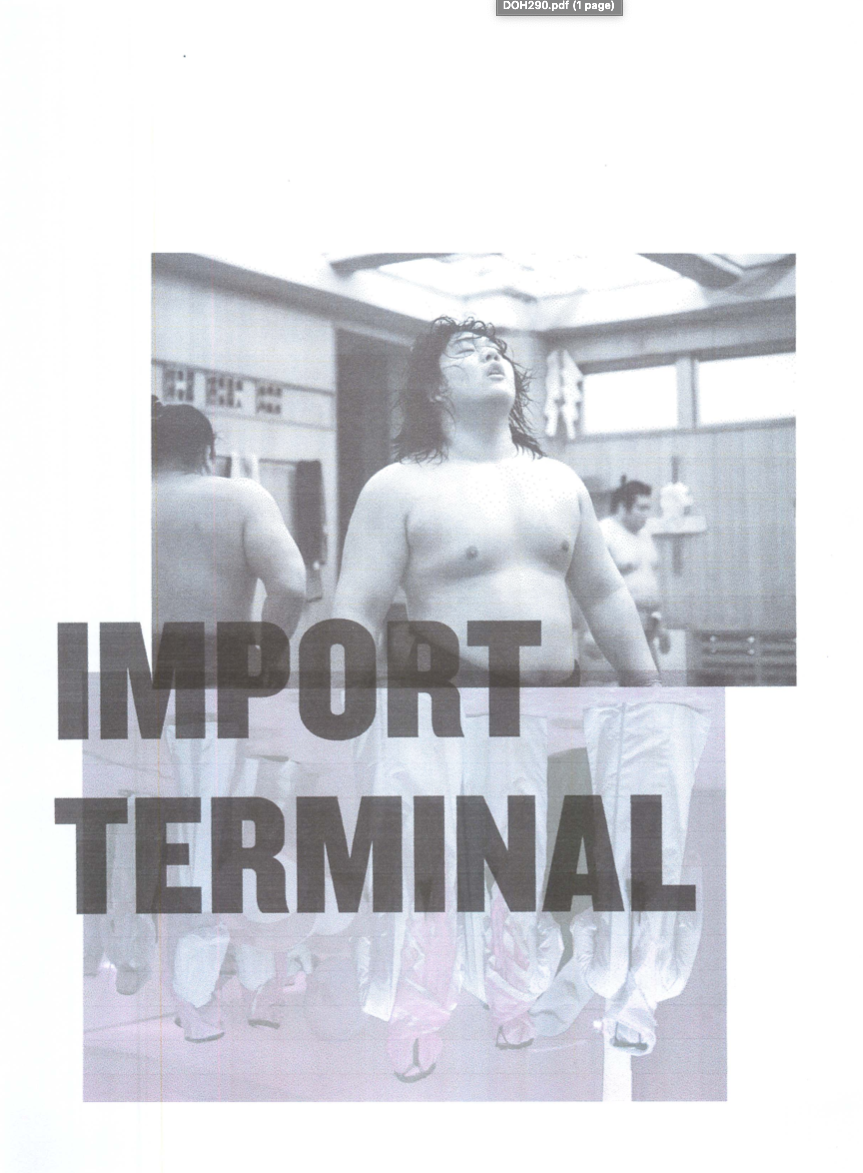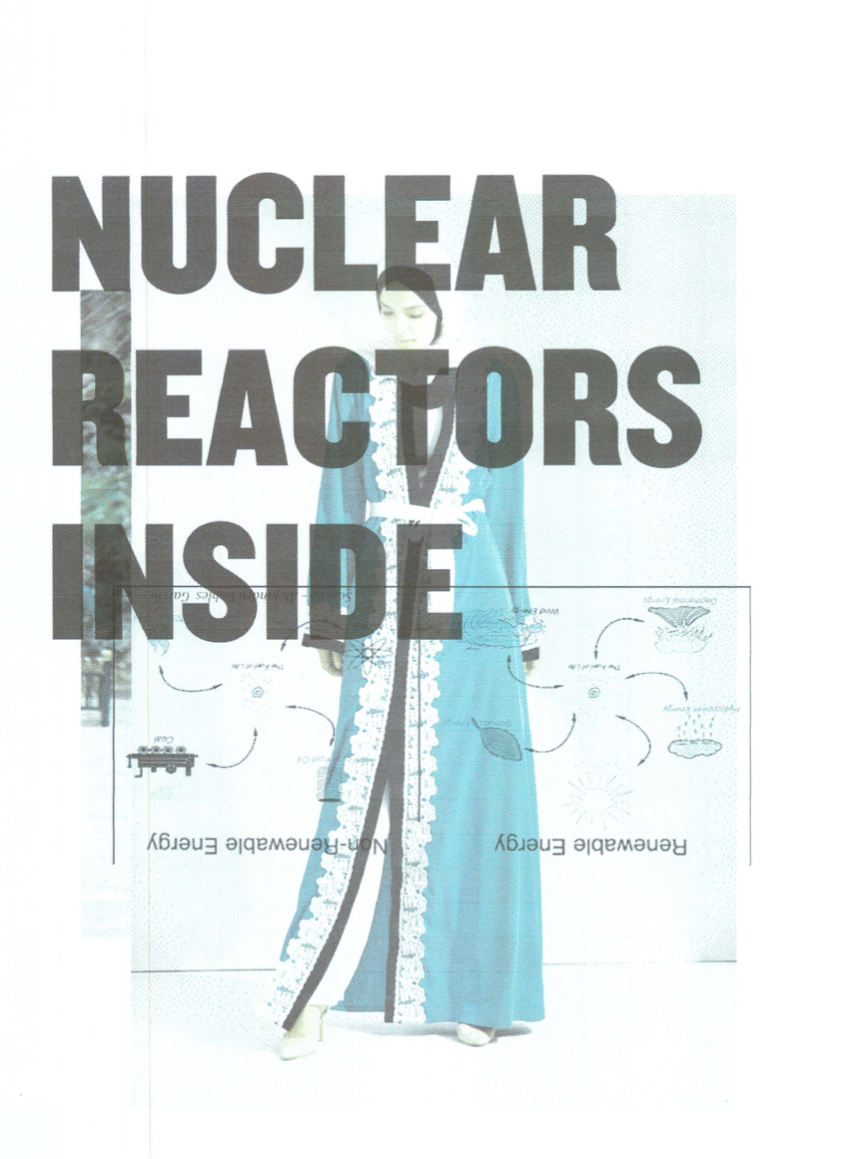At -162°C natural gas becomes liquid, reducing in volume by a factor of over 600, the key innovation that makes it an economically viable trade commodity. LNG is Qatar’s main export, with Japan being its largest customer and a primary source of revenue for this small yet influential gulf nation. Although mostly economic, this exchange impacts the culture, lifestyle, and geopolitics of both countries.
Bilateral relations between the two countries began in 1972, and the first LNG shipment reached Japanese shores on January 10, 1997. In 2011 Japan’s demand for LNG increased significantly due to the Fukushima disaster and the consequent shut down of most nuclear plants in the country. The need for energy impelled Qatar to step forward and offer Japan large quantities of LNG at competitive prices, a trade that continued into 2019.
To make this information tangible, the -162 project manifested into a kinetic installation consisting of an array of 40 printers suspended from the ceiling. The array is controlled by custom software that choreographs the printing of text and images extracted from the internet and synthesized into graphic compositions. The resulting performance ebbs and flows in varying intervals, exploring the constant exchange that feeds the economies of both Qatar and Japan.
Bilateral relations between the two countries began in 1972, and the first LNG shipment reached Japanese shores on January 10, 1997. In 2011 Japan’s demand for LNG increased significantly due to the Fukushima disaster and the consequent shut down of most nuclear plants in the country. The need for energy impelled Qatar to step forward and offer Japan large quantities of LNG at competitive prices, a trade that continued into 2019.
To make this information tangible, the -162 project manifested into a kinetic installation consisting of an array of 40 printers suspended from the ceiling. The array is controlled by custom software that choreographs the printing of text and images extracted from the internet and synthesized into graphic compositions. The resulting performance ebbs and flows in varying intervals, exploring the constant exchange that feeds the economies of both Qatar and Japan.
The project was conceived as two exhibitions taking place in each nation's capital city, Tokyo and Doha, to exemplify the concept of exchange between the countries. The installations occurred in sequence, three months apart, and took slightly different approaches (both formally and conceptually) to explore the economic, social, and cultural implications of the energy trade between these distant neighbors.
The Doha exhibition was the result of a collaboration between faculty and students at VCUarts Qatar, Texas A&M University In Qatar, and Tokyo Metropolitan University’s AIIT. The work was made possible with support from the VCUarts Qatar/Qatar Foundation Faculty Research Grant program, The Advanced Institute of Industrial Technology at Tokyo Metropolitan University, Tasmeem Doha, the Qatar Museum Authority / Doha Fire Station, and Arakawa Tokyo.
The Doha exhibition was the result of a collaboration between faculty and students at VCUarts Qatar, Texas A&M University In Qatar, and Tokyo Metropolitan University’s AIIT. The work was made possible with support from the VCUarts Qatar/Qatar Foundation Faculty Research Grant program, The Advanced Institute of Industrial Technology at Tokyo Metropolitan University, Tasmeem Doha, the Qatar Museum Authority / Doha Fire Station, and Arakawa Tokyo.
Hammett, Levi., Giovanni Innella, Simone Muscolino, Michael Hersrud, Maryam Al Homaid, Nathan Davis, Hind Al Saad, Sarah Elawad, & Reham Ahmed. -162°C, Doha. (Installation of 40 printers outputting procedurally generated visual content). The Fire Station, Gallery 3. 14 - 25 March, 2019.
With additional contributions from Reham Ahmed, Hind Al Saad, Sarah Elawad and Sophomore Graphic design students at VCUarts Qatar. Special thanks to George Paul, Polie Campiteli and Christopher Buchakjian.
With additional contributions from Reham Ahmed, Hind Al Saad, Sarah Elawad and Sophomore Graphic design students at VCUarts Qatar. Special thanks to George Paul, Polie Campiteli and Christopher Buchakjian.
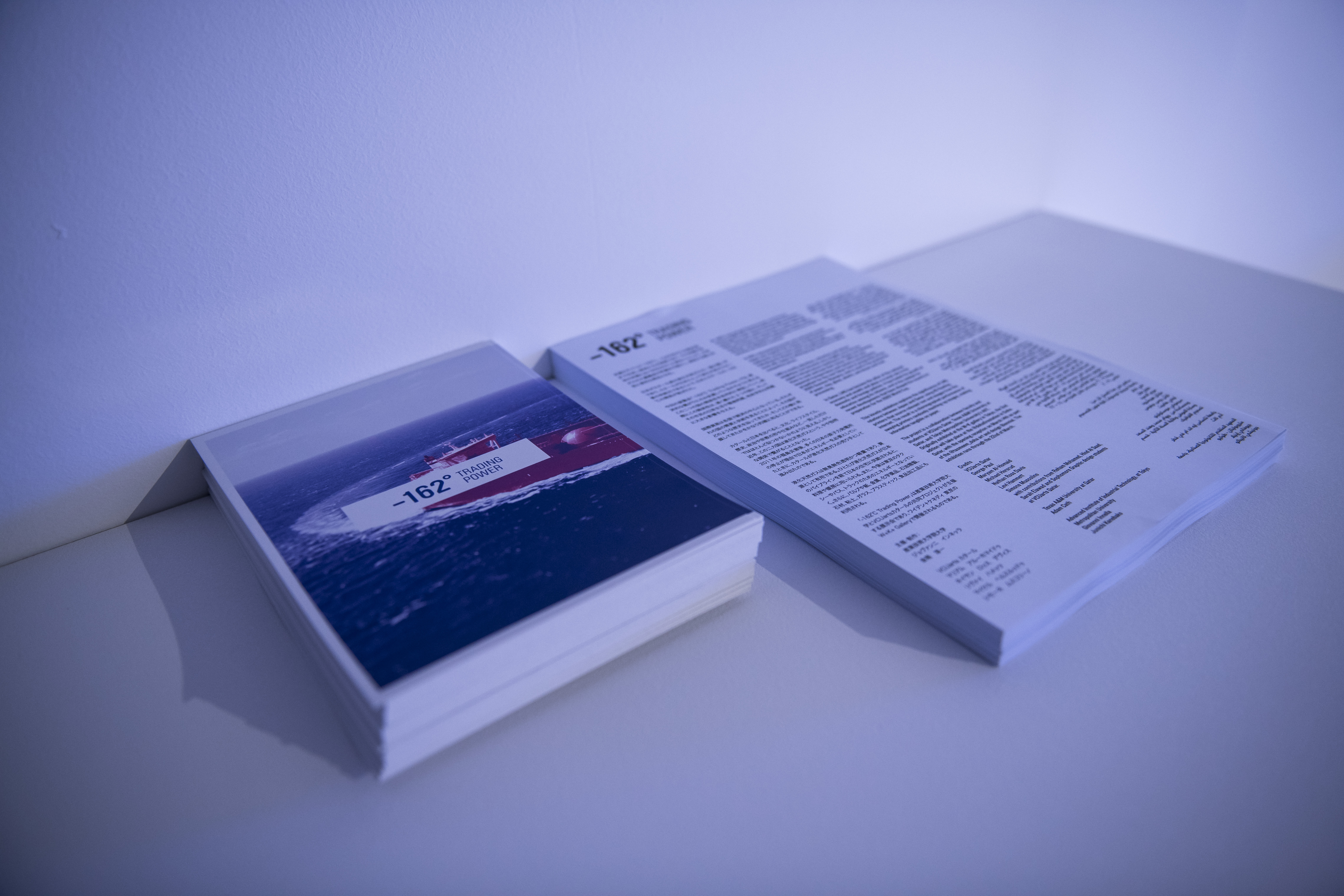
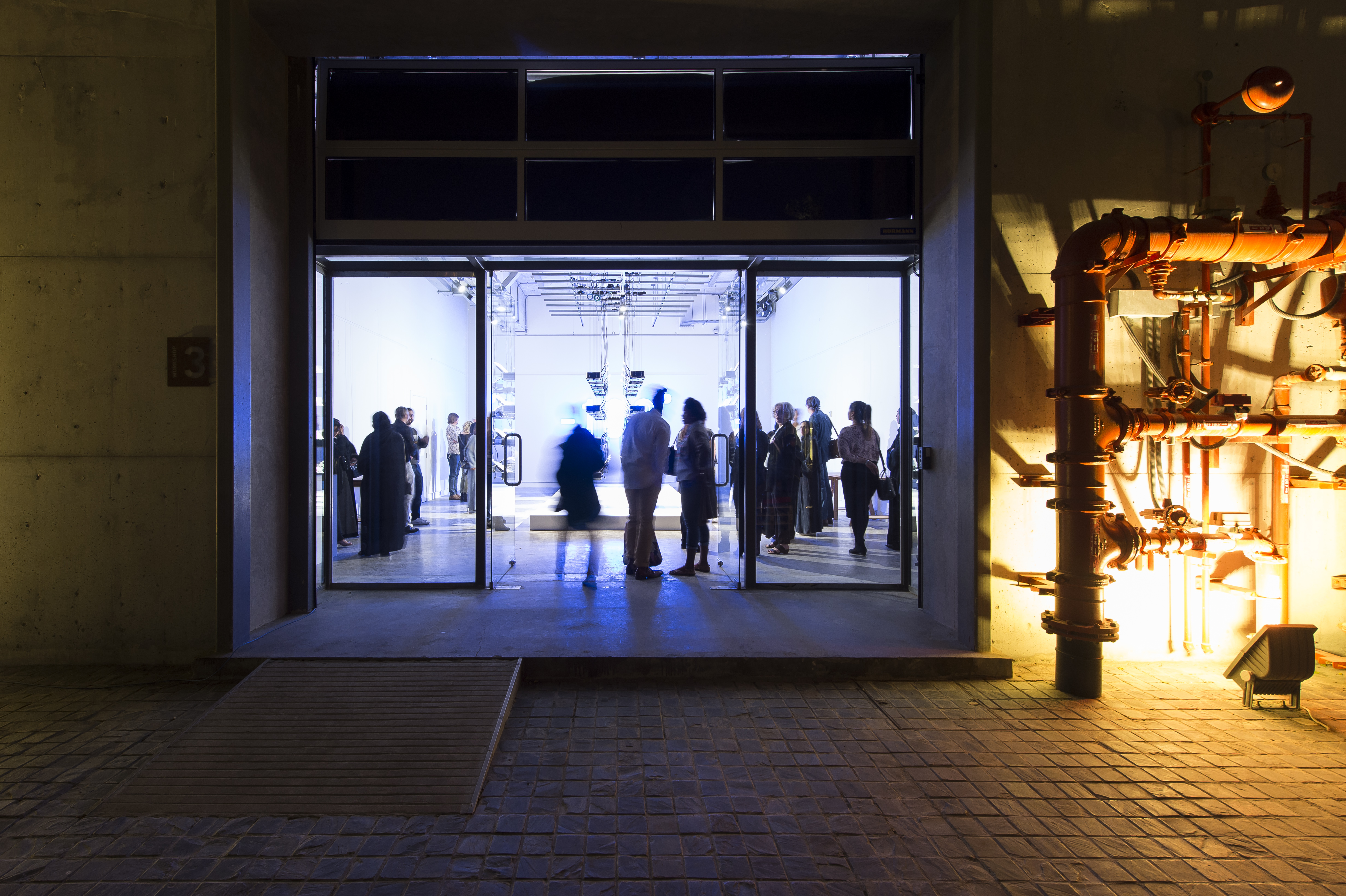
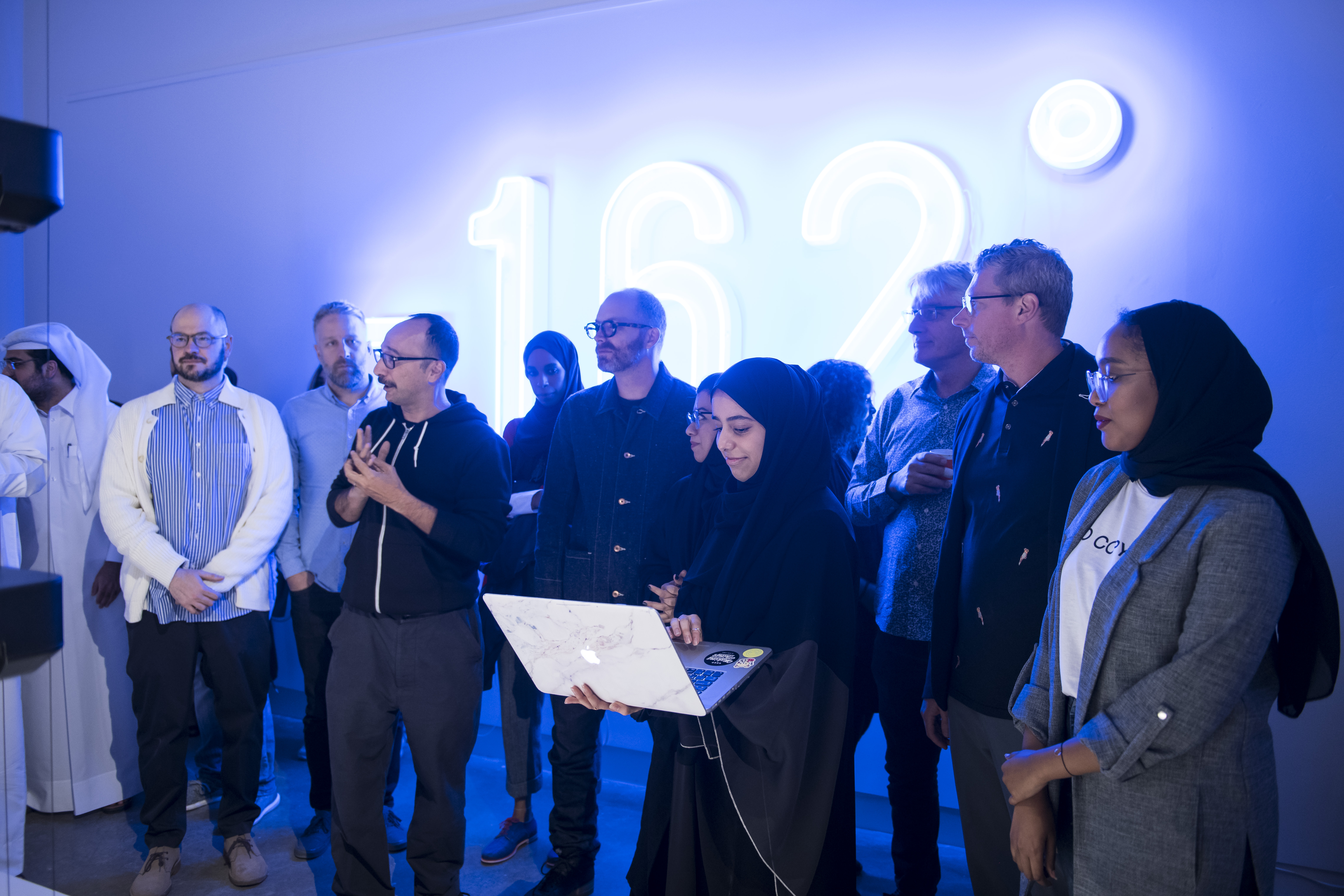

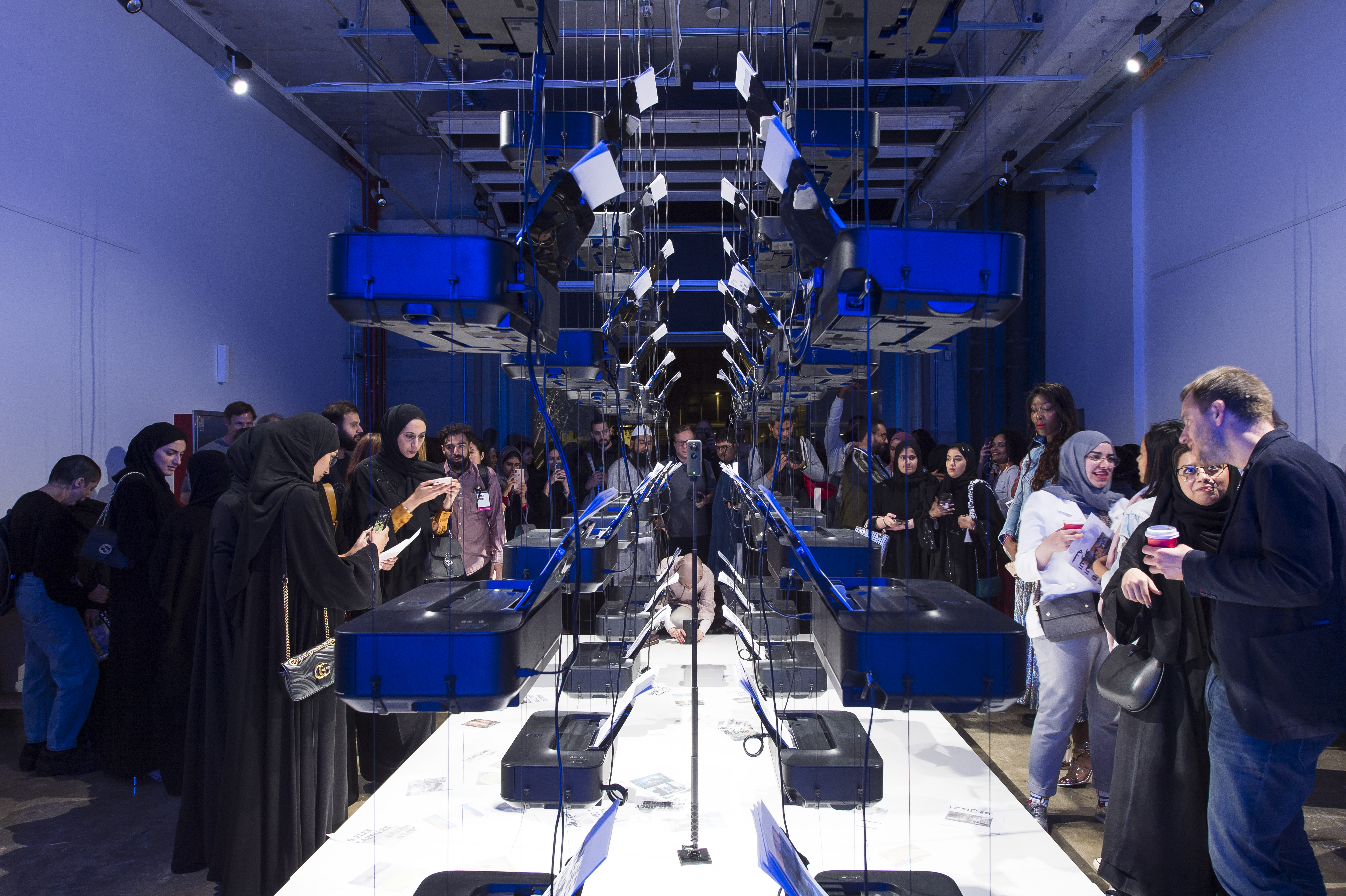
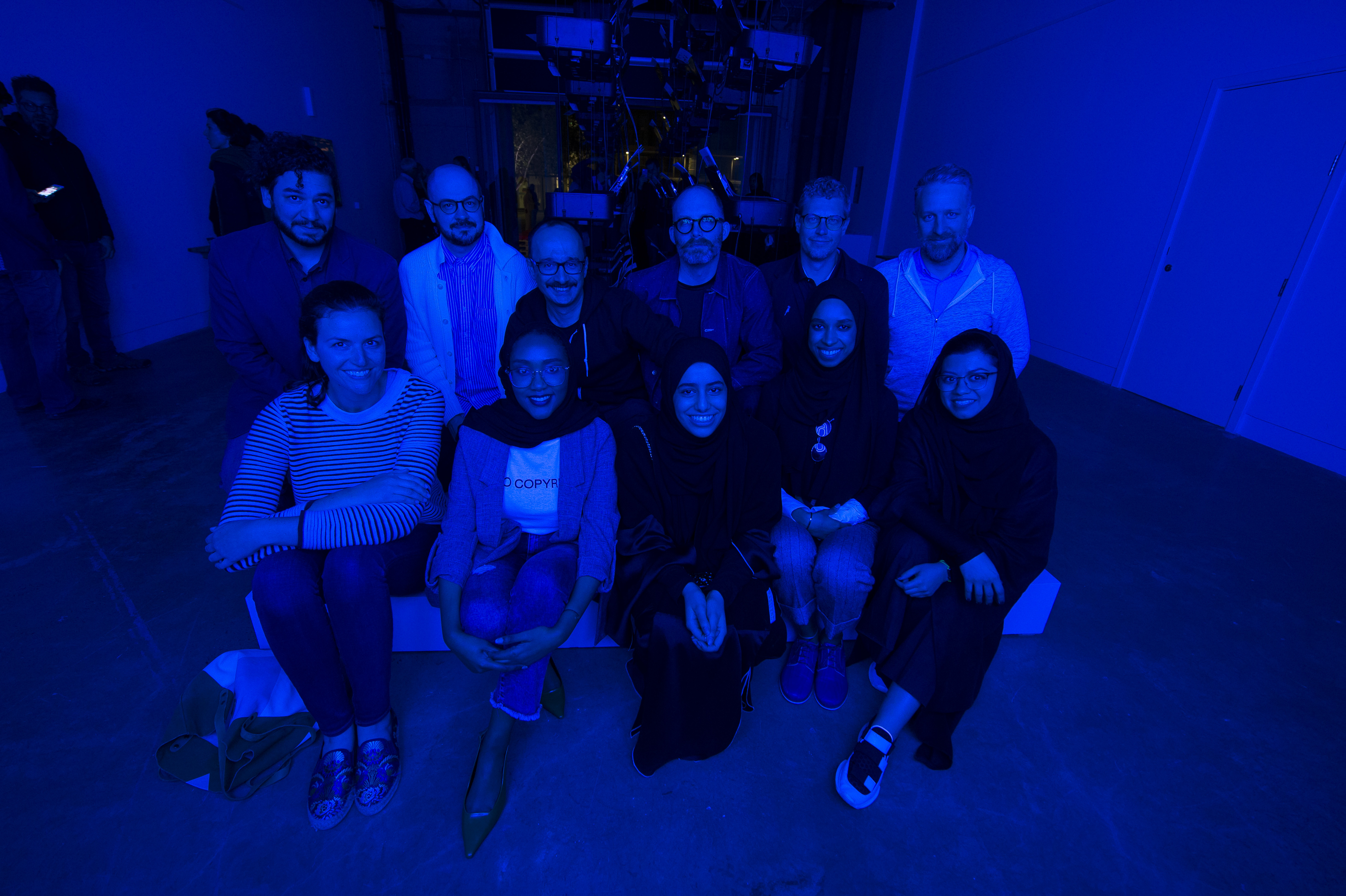
Below are images from instagram captured during the opening of the -162 exhibition in Tokyo, Japan.





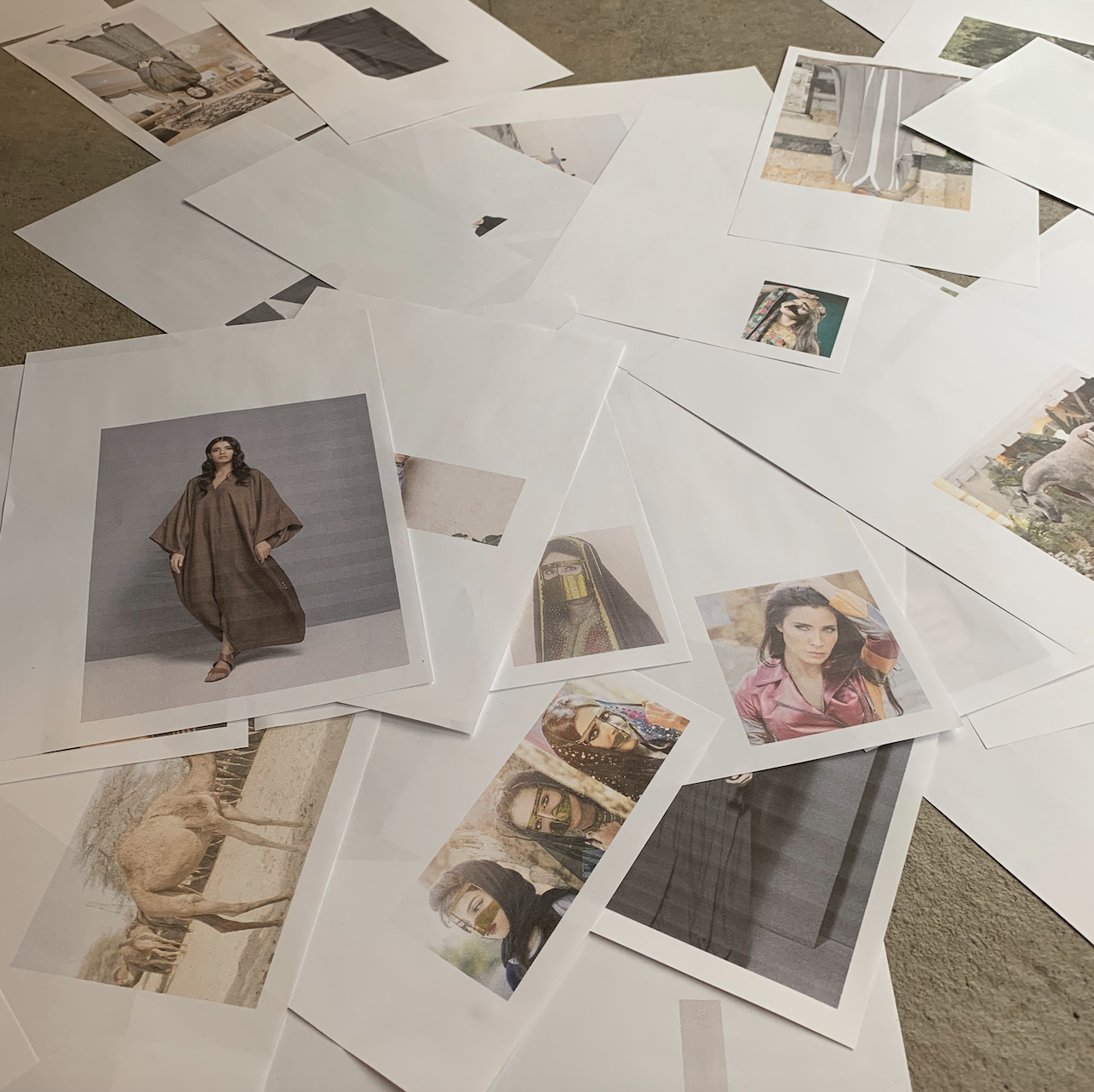







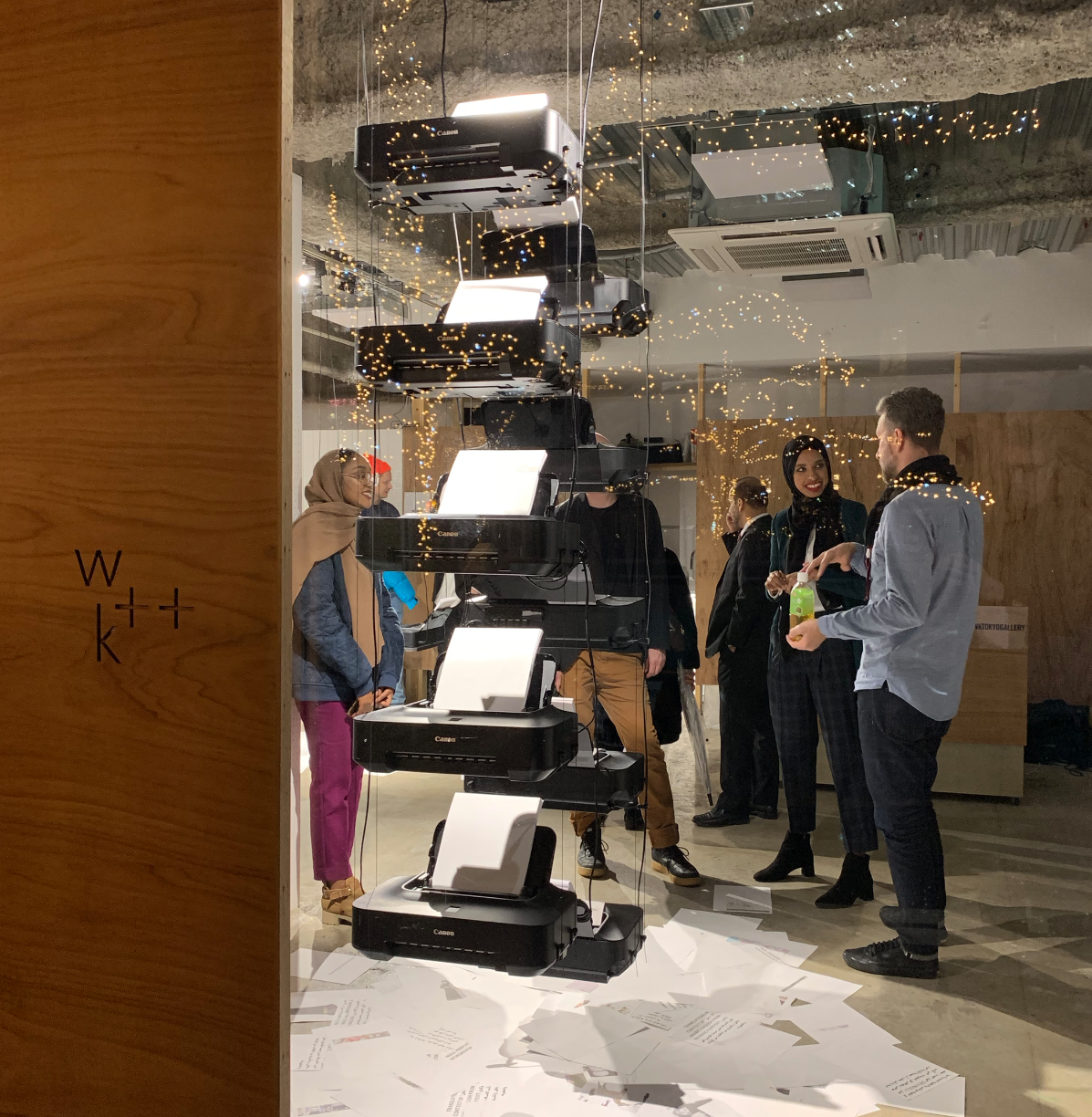


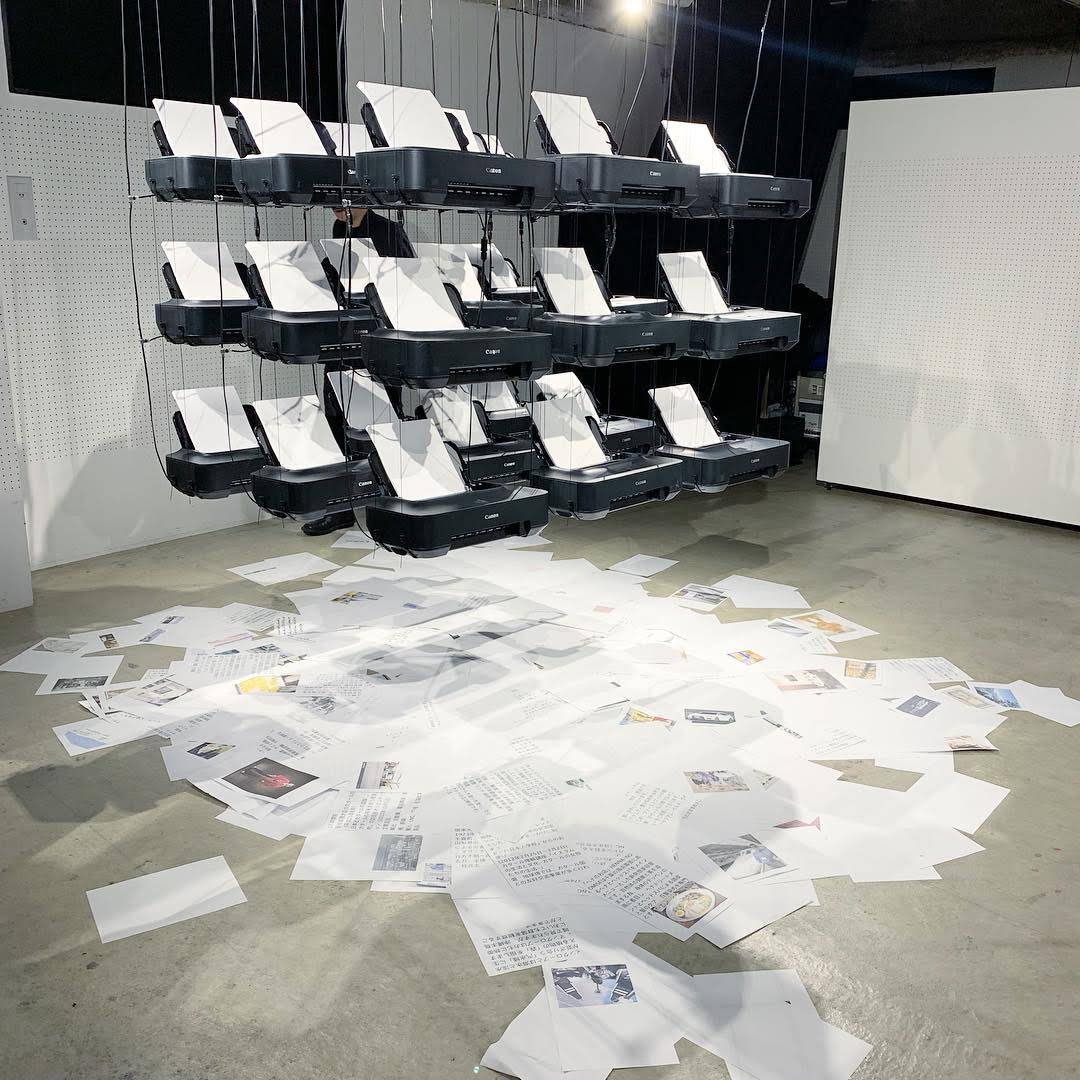




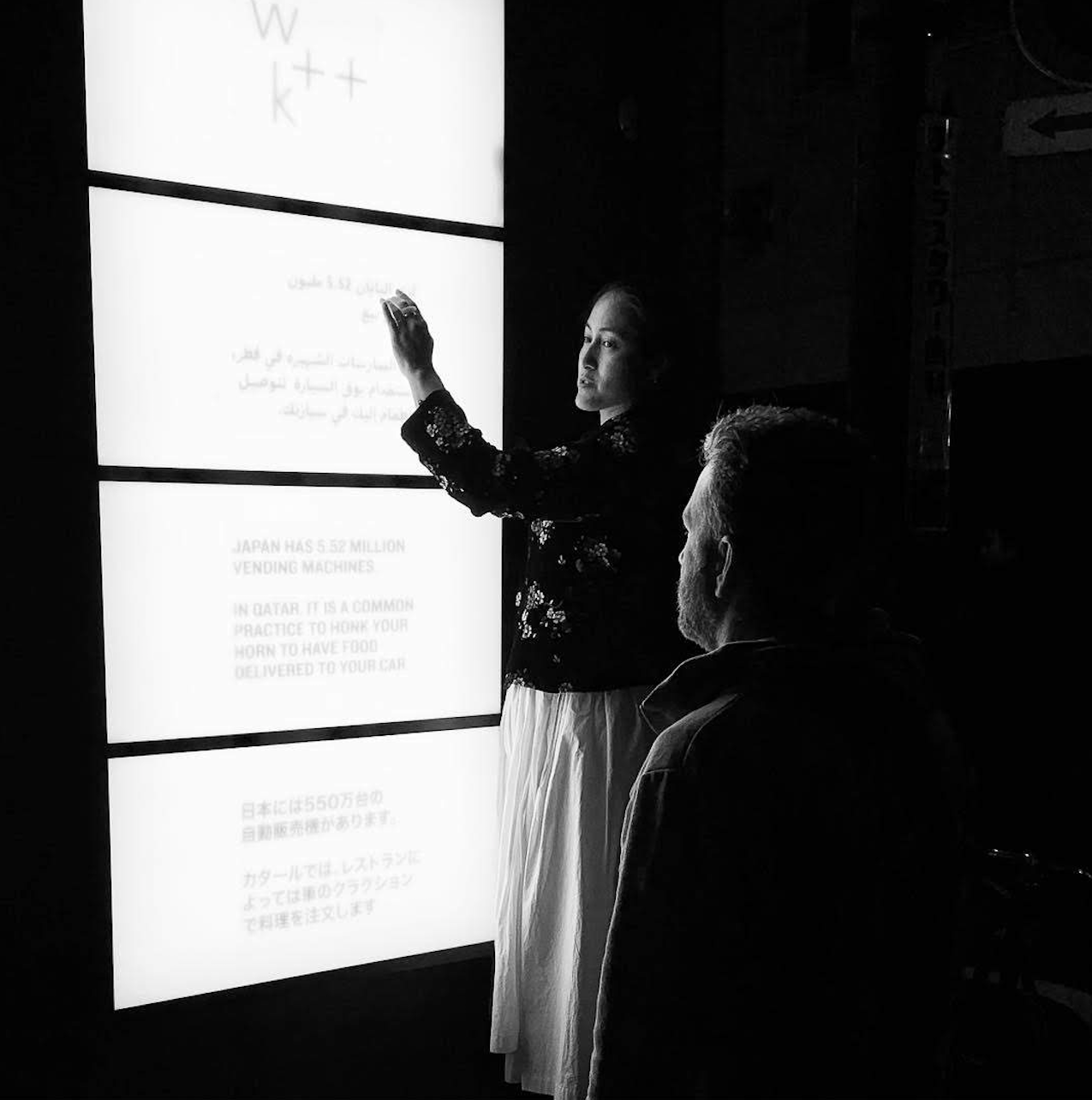






Below are some of the happy accidents that resulted from the printing process. The 40 printers randomly pulled from a pool of approximately 15,000 images that had been scraped from the internet into a database using keywords from news articles about the Qatar & Japan relationship. For each cycle, the printers would print one of three specific image databases; (1) Qatar, (2) Japan, and (3) LNG, and would randomly select a word or image file.
After each cycle, the printed pages were reloaded into the printers and overprinted. Each A4 sheet was printed 6 times, three overprint layers on the front and three on the back. In theory, each print should be a mash-up of text and images from Qatar, Japan and LNG to create an abstract narrative with a satirical twist on cultural difference and similarities.
